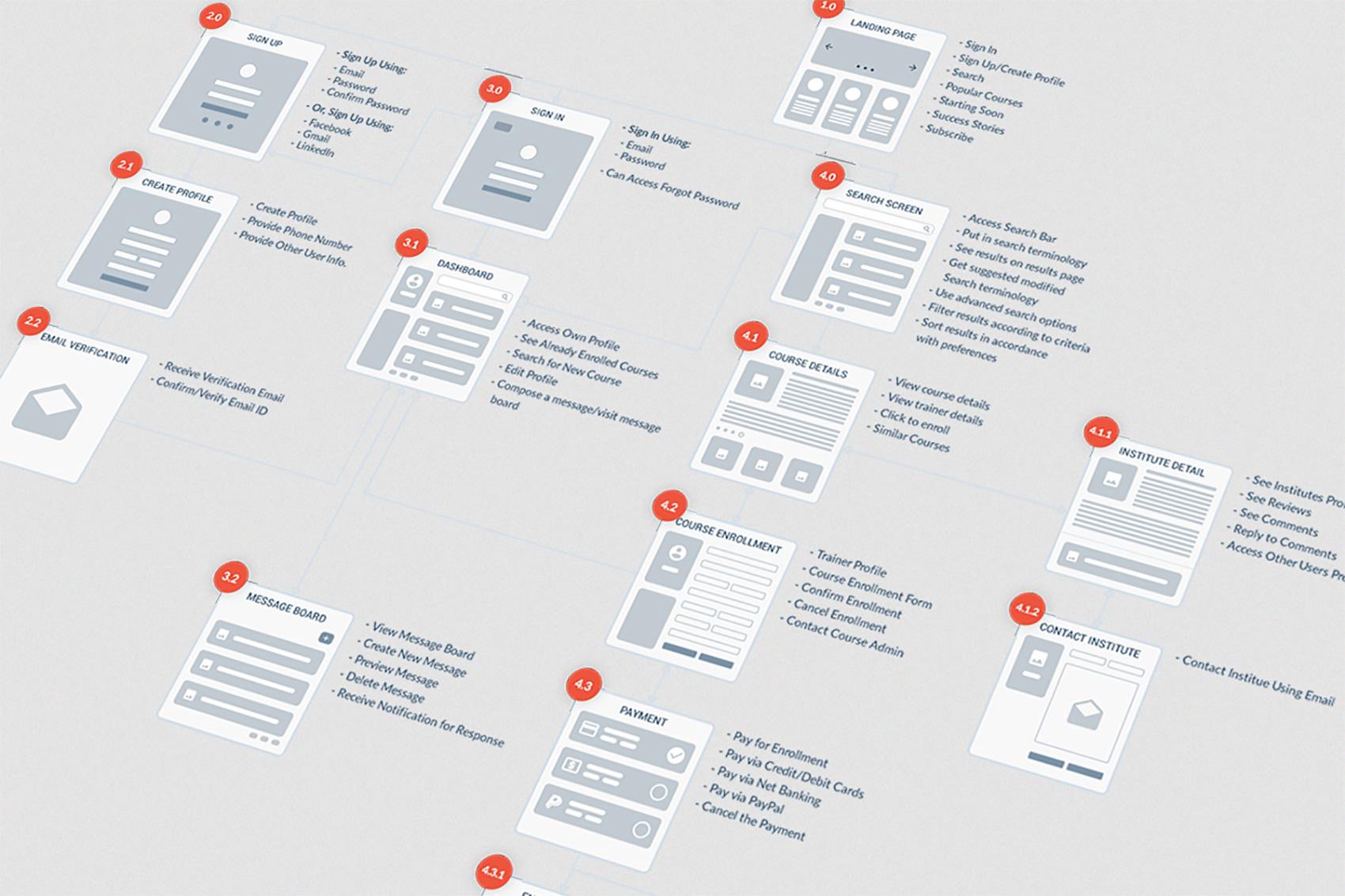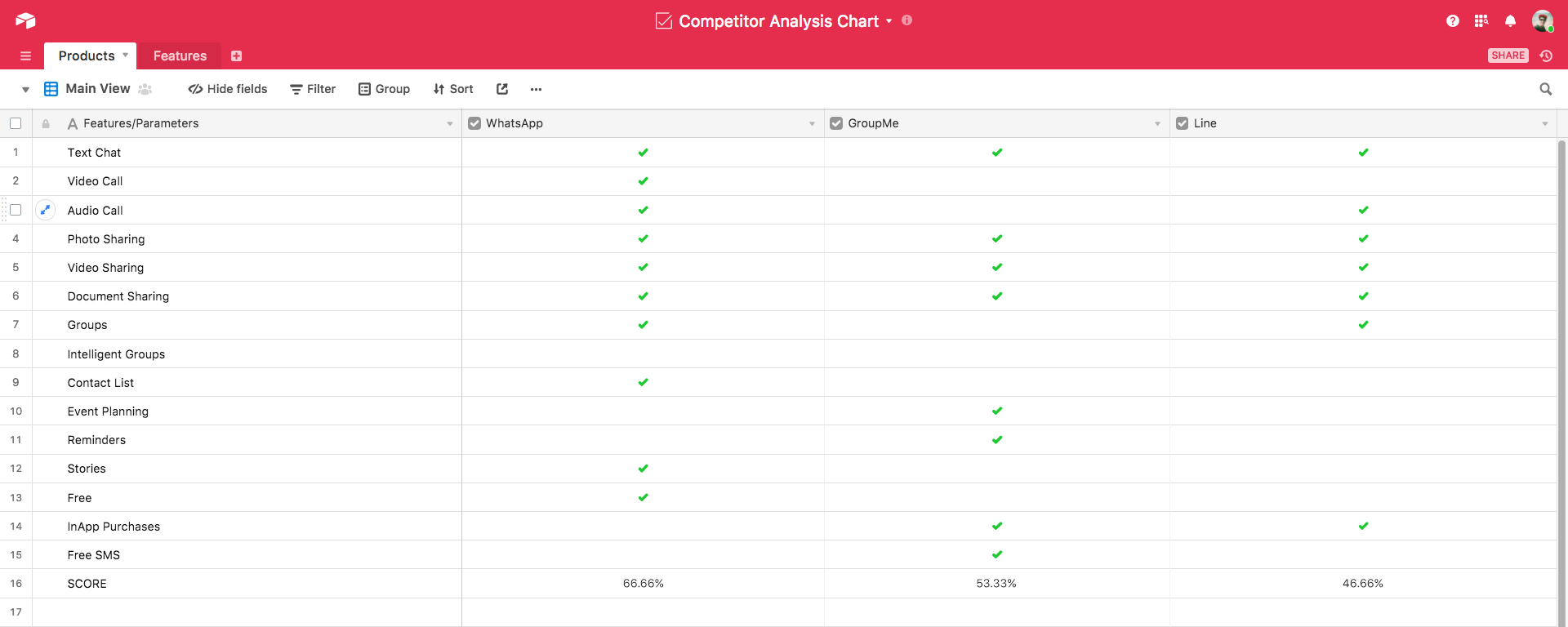The Whys
- Why are competitors doing things a certain way?
- Why do people trust or use a competitor’s product?
- Why is a particular product among the top 3 or top 5 solutions in the market?
One of the most effective practice is to use the 5 Whys technique. You can read more about it here. The “Five Whys” strategy is a simple, effective tool for uncovering the root of a problem.
Asking these questions helps identify the source of your competitors’ success.
The Whats
- What are the solutions competitors are offering to end users?
- What is the problem they’re solving?
- What are the steps they follow to provide solutions?
- What are the platforms through which they interact with end users
Asking these questions will help you identify the advantages you may have over the competition as well as help identify where a competitor may have the edge over your product/idea.
The Hows
- How does the competition sustain a competitive advantage over the other alternative solutions?
- How are they managing their platform infrastructure from a technical standpoint?
- How has the competition designed their product’s look and feel that contributes to its UX?
- How is the pricing structured?
Asking these questions helps you identify and understand the process competitors are following. These questions can also help identify gaps in their overall service design that your product may be able to fill.
2. Use Their Products
You can establish a basic understanding about the competition by studying their online or offline presence. However, if you want to really understand their service design, you will need to actually use your competitor’s product.
Here is how you can do it:
- Try and subscribe or register for a free trial (or sign up for a brief period).
- Use the competitor’s product and analyze how their user journeys and task flows are designed.
- Draw an approximate user journey map (for example, completing a purchase or Onboarding). How is the UX?
- Examine how easy or frustrating it is to complete a task.
- Interact with the competitor’s customer service — via email, Twitter, Facebook, phone calls, etc. and make note of how they handle such interactions.
- How does the general discoverability of your competitor’s product/service rank? Analyze the competitor’s SEO, Alexa rankings and social presence.
- What is the competitor’s pricing strategy? Sometimes, even if your product’s features match the competitor’s, you can gain an edge by being smart about your pricing strategy.
3. Find out the UX Issues with Competitors’ Products
Every platform or a product is designed with a certain type of user or target demographic in mind. It typically goes through many iterations based on various user research, feedback and testing. Nevertheless, some product designs are based purely on assumptions, hypotheses, and the opinion of stakeholders, and therefore often turns out to be less than perfect. We can learn from others’ mistakes by identifying a competitor’s problems, or what remains unsolved with their product’s overall UX.
Here is how you can identify the UX problems with your competitors product:
- Try and study/research various task flows and aspects of the competitor’s product, like the user onboarding process. How many steps does it involve? Is it easy, or is it too convoluted and takes too long?
- Does the competitor’s product pass basic usability and heuristic guidelines?
- Look at how they optimized user flows. Can they be improved? For example, if it takes someone using your competitor’s product five steps and more than a minute to complete a purchase, see how it can be made faster.
- Identify any critical features the competitors may have missed.
- What is the language they use in their email communications? On the system?
- How their information architecture is designed?

(Click to zoom in)
4. Identify the Visual Design Shortcomings of a Competitor’s Product
Study the competitor product’s visual design/language — the color palette, typography, iconography, etc., and try to determine the reason why they did something in a particular way, and if there is a better way of doing it.
Here are some ideas to evaluate the visual design:
- Find out how a competitor’s landing page is structured visually. Are the call to actions clear and easy to find? Or are they hidden under a few layers of interactions?
- What color scheme are they using? What could be the reason behind their color decisions?
- Does the platform work well on mobile or tablet devices?
- Collect screenshots of various screens from your competitor’s platform, study them, and write up a report on all that’s good as well as all that’s wrong with it.

5. Prepare a Competitor Analysis Report
A typical competitor analysis report consists of an in-depth study of the shortlisted competitors. The report should highlight critical points the competitors have missed as well as the points where they have succeeded.
Here is a list of a few things which should be included in a competitor analysis report:
- An in-depth analysis of each of the identified competitors’ products.
- Screenshots along with annotations explaining the specifics of each feature/UX flow.
- Feature list and/or approximate sitemap of each competitor’s platform/product.
- Strengths and areas of improvement for each of the analyzed products.
- Competitor analysis matrix — A table which contains a column for features of a product and separate columns for each of the product.
Here is an example of how a competitor analysis matrix can be structured:

(Click to zoom in)
A typical competitor analysis matrix contains the following:
1) Features/solutions of the platform you are building.
2) Confirmation that the competitors have/don’t have the same feature/solution.
3) Score — you can assign a certain number of points to each of the features based on their importance. For example, in the sample above, chat may carry 10 points and stories may carry 5 points.
(Sum of all the points scored by the competitor / The total number of points) x 100 = Competitor score in percentage.
You can also include scores for the user experience, user interface and the performance of each of the platforms.
Conclusion
A typical competitive analysis is a time consuming process, but it can be done quickly if you keep it simple:
- Identify the top 3–5 competitors to analyze, and determine their offerings and market position.
- Use their products or services to understand how their business is structured.
- Identify any UX issues with a competitor’s product and create a comprehensive list. This list will help you learn from other people’s mistakes.
- After identifying UX issues, look for any visual design shortcomings.
- Finally, always prepare a competitor analysis matrix where you list all your competitors along with their offerings/features. This report will help you understand the competition from a holistic viewpoint.
If performed correctly, a competitive analysis can dramatically improve customer satisfaction and your conversion rates as well as provide assurance that you stand apart from your competitors. Go ahead! Try it out!
